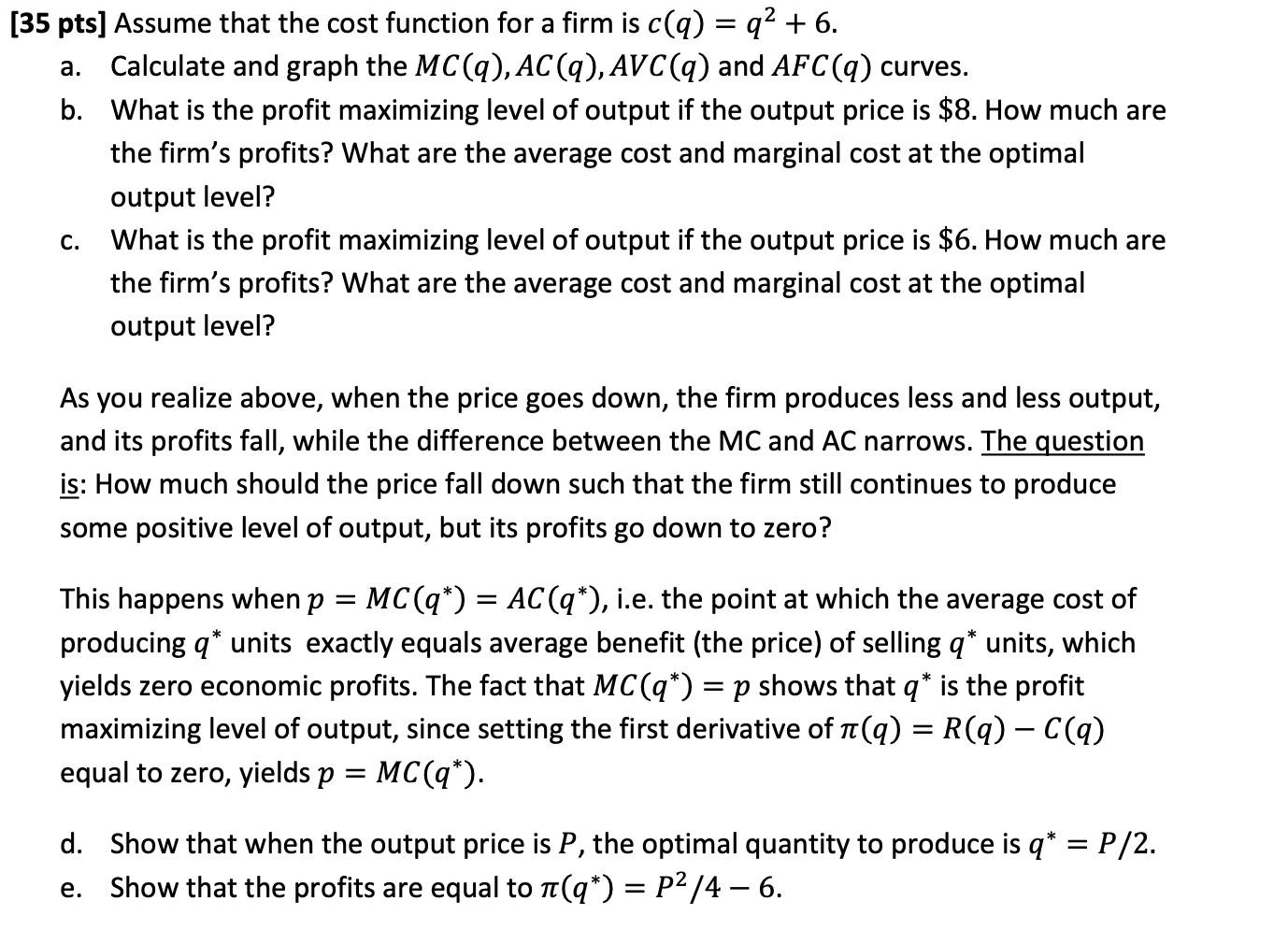Answered step by step
Verified Expert Solution
Question
1 Approved Answer
[35 pts] Assume that the cost function for a firm is c(q) = q + 6. a. Calculate and graph the MC(q), AC(q), AVC

[35 pts] Assume that the cost function for a firm is c(q) = q + 6. a. Calculate and graph the MC(q), AC(q), AVC (q) and AFC(q) curves. b. What is the profit maximizing level of output if the output price is $8. How much are the firm's profits? What are the average cost and marginal cost at the optimal C. output level? What is the profit maximizing level of output if the output price is $6. How much are the firm's profits? What are the average cost and marginal cost at the optimal output level? As you realize above, when the price goes down, the firm produces less and less output, and its profits fall, while the difference between the MC and AC narrows. The question is: How much should the price fall down such that the firm still continues to produce some positive level of output, but its profits go down to zero? This happens when p = MC(q*) = AC (q*), i.e. the point at which the average cost of producing q* units exactly equals average benefit (the price) of selling q* units, which yields zero economic profits. The fact that MC(q*) = p shows that q* is the profit maximizing level of output, since setting the first derivative of (q) = R(q) C(q) equal to zero, yields p = MC(q*). d. Show that when the output price is P, the optimal quantity to produce is q* = P/2. e. Show that the profits are equal to (q*) = P/4 6.
Step by Step Solution
There are 3 Steps involved in it
Step: 1

Get Instant Access to Expert-Tailored Solutions
See step-by-step solutions with expert insights and AI powered tools for academic success
Step: 2

Step: 3

Ace Your Homework with AI
Get the answers you need in no time with our AI-driven, step-by-step assistance
Get Started


